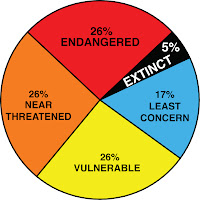Twenty first century being the post-industrial knowledge era where information is greatly valued, begs the question: is our information in safe hands? Created in 1969, the Internet continues to rise in its popularity to an extent where its incumbency is almost a subject of dependence for prosaic lives. Huge organizations and even governments use the Internet as a means of communication. Henceforth, extremely confidential and high priority commands run through wires as binary making it extremely theft  prone. Cyberspace is the place harboring various computer network communications and a virtual world synopsis where cyber-weapon as a development of the era plays a vital role in constituting a virtual war - the cyber-war. Nations and various organizations have hence been taking part in cyber warfare, developing their capabilities for both defensive and offensive purposes. Cyber warfare is greatly driven by motives classified into military, civil, political and research bills. The ways in which cyber warfare allows the attacker to fulfill its purpose is analogous to real life methods such as espionage, sabotage and propaganda. Cyber warfare continues to emerge as an extremely serious threat due to the recent cyber-attacks carried out by various nations across the globe; not only has the United Nations recognized cyber warfare to be a threat to world peace, but the technological products that surround us have also been deemed to be involved in it however despite it being argued that a cyber-war is very improbable coupled with the hype being largely made by tech firms in order for them to make huge profits.
prone. Cyberspace is the place harboring various computer network communications and a virtual world synopsis where cyber-weapon as a development of the era plays a vital role in constituting a virtual war - the cyber-war. Nations and various organizations have hence been taking part in cyber warfare, developing their capabilities for both defensive and offensive purposes. Cyber warfare is greatly driven by motives classified into military, civil, political and research bills. The ways in which cyber warfare allows the attacker to fulfill its purpose is analogous to real life methods such as espionage, sabotage and propaganda. Cyber warfare continues to emerge as an extremely serious threat due to the recent cyber-attacks carried out by various nations across the globe; not only has the United Nations recognized cyber warfare to be a threat to world peace, but the technological products that surround us have also been deemed to be involved in it however despite it being argued that a cyber-war is very improbable coupled with the hype being largely made by tech firms in order for them to make huge profits.
 prone. Cyberspace is the place harboring various computer network communications and a virtual world synopsis where cyber-weapon as a development of the era plays a vital role in constituting a virtual war - the cyber-war. Nations and various organizations have hence been taking part in cyber warfare, developing their capabilities for both defensive and offensive purposes. Cyber warfare is greatly driven by motives classified into military, civil, political and research bills. The ways in which cyber warfare allows the attacker to fulfill its purpose is analogous to real life methods such as espionage, sabotage and propaganda. Cyber warfare continues to emerge as an extremely serious threat due to the recent cyber-attacks carried out by various nations across the globe; not only has the United Nations recognized cyber warfare to be a threat to world peace, but the technological products that surround us have also been deemed to be involved in it however despite it being argued that a cyber-war is very improbable coupled with the hype being largely made by tech firms in order for them to make huge profits.
prone. Cyberspace is the place harboring various computer network communications and a virtual world synopsis where cyber-weapon as a development of the era plays a vital role in constituting a virtual war - the cyber-war. Nations and various organizations have hence been taking part in cyber warfare, developing their capabilities for both defensive and offensive purposes. Cyber warfare is greatly driven by motives classified into military, civil, political and research bills. The ways in which cyber warfare allows the attacker to fulfill its purpose is analogous to real life methods such as espionage, sabotage and propaganda. Cyber warfare continues to emerge as an extremely serious threat due to the recent cyber-attacks carried out by various nations across the globe; not only has the United Nations recognized cyber warfare to be a threat to world peace, but the technological products that surround us have also been deemed to be involved in it however despite it being argued that a cyber-war is very improbable coupled with the hype being largely made by tech firms in order for them to make huge profits.
